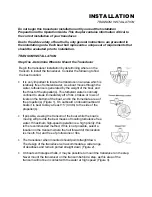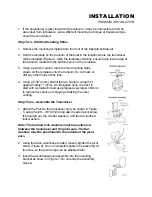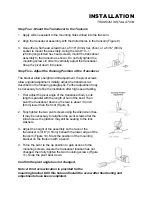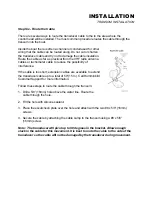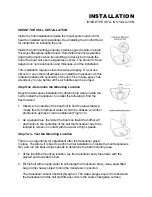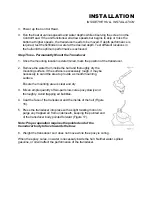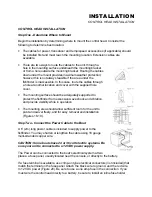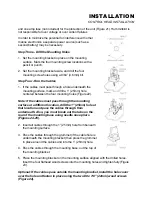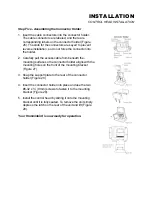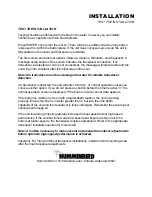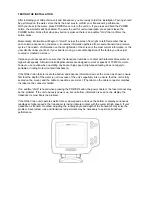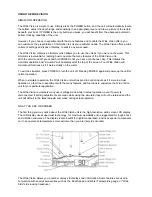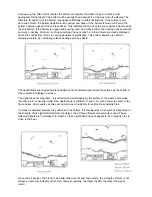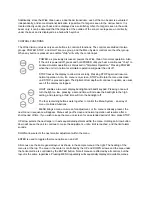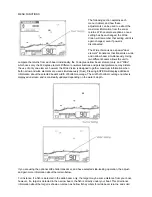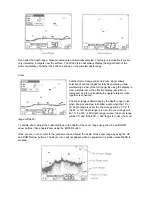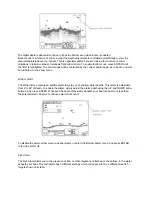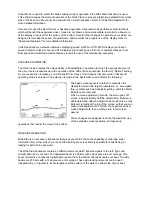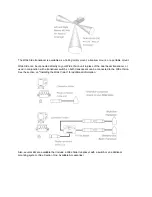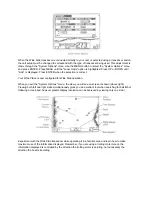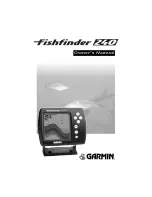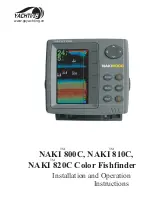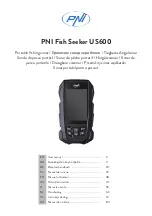
Additionally, since the Wide Vision uses a dual beam transducer, each of the two beams is evaluated
independently, and some directional indication is possible. If a target is seen in the narrow beam, it is
located directly under your boat, and is displayed as a solid fish symbol. If a target is seen in the wide
beam only, it can be assumed that the target is at the outside of the sonar coverage area, not directly
under the boat, and is displayed as a hollow fish symbol.
CONTROL FUNCTIONS
The Wide Vision unit uses only seven buttons to control all functions. The controls are divided into two
groups: POWER, STOP, and LIGHT are one group, and the Menu System controls are the other group.
When any button is pressed, an audible "chirp" will verify the control input.
POWER, as previously discussed, powers the Wide Vision for normal operation. Also,
if the unit is powered off, press and hold POWER until you hear a continuous "chirp" to
enable simulator operation as discussed in "Simulator Operation." Pressing POWER
when the unit is in normal or simulator operation will power the unit off.
STOP freezes the display to allow closer study. Pressing STOP again will resume
normal operation. Also, if a menu is on-screen, STOP will retain the menu onscreen
until STOP is pressed again. The digital bottom depth will continue to update, as usual,
even if the display is stopped.
LIGHT enables a two-level display backlight and backlit keypad. Pressing once will
turn the light on low, pressing a second time will increase the backlight to the high
setting, and pressing a third time will turn the backlight off.
The four remaining buttons work together to control the Menu System - an array of
menu controlled functions.
MENU brings a menu on-screen for adjustment, or if a menu is already present, the
next menu in sequence will appear. Menus will go off-screen and normal operation will resume after a
short period of time. If you wish to keep the menu on-screen for an extended period of time, press STOP.
UP arrow selects the next larger or next sequential adjustment within the menu. Holding an Arrow button
down will cause the unit to continue to make the adjustment, until a limit is reached, and the limit alarm
sounds.
DOWN arrow selects the next smaller adjustment within the menu.
ENTER is used to toggle other menu options on and off.
All menus use the same general layout as shown in the sample menu at the right. The heading of the
menu is at the top. The area in the center is controlled by the UP and DOWN arrows, and the area under
the horizontal line is controlled by the ENTER button. Not all menus are affected by all controls, but the
layout is the same regardless. Pressing MENU repeatedly will sequentially display all available menus.
Summary of Contents for Wide Vision
Page 1: ......

